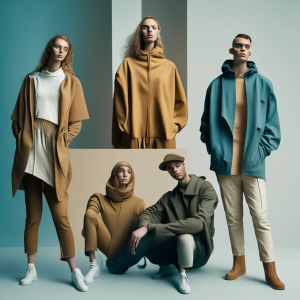In our journey through the world of architectural design, we’ve explored the delicate dance of balancing aesthetics with sustainability. Our discussion delves into the exciting challenges and innovative solutions that architects face as they strive to create beautiful, functional, and eco-friendly structures. We uncover how thoughtful design choices enable us to harmonize the visual appeal of our buildings with the urgent need to minimize their environmental impact, blending creativity and responsibility in ways that inspire and endure. How do you balance aesthetics and sustainability in architecture? It’s a question that has sparked countless debates in the architectural community. As we navigate the challenges of modern design, we find ourselves at the intersection of creating beautiful structures that are not only visually appealing but also kind to our planet.

Understanding the Basics of Aesthetics and Sustainability
What is Aesthetics in Architecture?
Aesthetics in architecture refers to the principles of beauty and artistic taste within the design of buildings and structures. It’s about what makes a building pleasing to the eye and harmoniously integrated into its surroundings. Good aesthetics consider factors like form, scale, color, and texture, which together create a cohesive and visually appealing design.
What is Sustainability in Architecture?
Sustainability in architecture means designing and constructing buildings in a way that minimizes negative environmental impacts. This involves using eco-friendly materials, enhancing energy efficiency, reducing waste, and protecting the environment. Sustainable architecture aims to meet the needs of the present without compromising the ability of future generations to meet their own needs.
The Importance of Balancing Aesthetics and Sustainability
Balancing aesthetics and sustainability is crucial for creating buildings that are not only beautiful but also environmentally responsible. This balance ensures that our structures do not compromise the health of our planet while offering functional and appealing spaces for inhabitants. Let’s break down why this balance is so essential.
Enhancing Quality of Life
Beautiful and sustainable buildings contribute to the well-being of their occupants. Natural light, fresh air, and green spaces can improve mental health, productivity, and overall quality of life. When a space is both aesthetically pleasing and sustainable, it offers a nurturing environment that promotes well-being.
Reducing Environmental Impact
Balancing aesthetics and sustainability ensures that buildings are constructed using materials and methods that are less harmful to the environment. This combination reduces carbon footprints, conserves resources, and helps combat climate change.
Meeting Regulatory Requirements
In many regions, building codes and regulations are increasingly emphasizing sustainability. Balancing aesthetics with these requirements ensures compliance without sacrificing design quality.
Strategies for Achieving a Balance
Balancing aesthetics and sustainability requires a multi-faceted approach, combining thoughtful design with innovative building practices. Here are some key strategies to achieve this balance.
Integrating Natural Elements
Incorporating natural elements like plants, water features, and natural light not only enhances the visual appeal but also contributes to sustainability. For example, green roofs and living walls can improve air quality and insulation, while natural lighting reduces the need for artificial lighting.
Using Sustainable Materials
Opting for materials that are eco-friendly, recycled, or sustainably sourced can greatly impact a building’s environmental footprint. Materials like bamboo, reclaimed wood, and recycled metal are both sustainable and versatile, allowing for creative and aesthetically pleasing designs.
| Material | Sustainable Attribute | Aesthetic Quality |
|---|---|---|
| Bamboo | Rapidly renewable and biodegradable | Warm, natural texture |
| Reclaimed Wood | Reduces waste and conservation of resources | Unique, rustic appearance |
| Recycled Metal | Minimizes mining impacts | Modern, sleek finish |
Implementing Energy-Efficient Systems
Using energy-efficient systems and technologies enhances sustainability and can also contribute to the aesthetic value of a building. Solar panels, smart HVAC systems, and energy-efficient windows not only reduce energy consumption but also offer innovative design opportunities.
Adaptive Reuse of Existing Structures
Rehabilitating and repurposing existing buildings is a sustainable practice that can be creatively integrated into new designs. This approach preserves the history and character of structures while reducing the need for new construction materials.
Case Studies: Successful Balance of Aesthetics and Sustainability
To better understand how aesthetics and sustainability can be balanced, let’s look at some real-world examples where architects have successfully combined these elements.
The Edge, Amsterdam
The Edge is often touted as the most sustainable office building in the world. It combines cutting-edge technology with modern design to create a functional and beautiful workspace. The building features:
- Solar Panels: Covering the entire southern wall, providing a significant portion of the building’s energy needs.
- Rainwater Harvesting: Collected rainwater is used for toilet flushing and irrigation.
- Smart Lighting: LED lighting systems that adjust based on occupancy and natural light levels.
These sustainable features are seamlessly integrated into a sleek, modern design that epitomizes balance.
Bosco Verticale, Milan
The Bosco Verticale (Vertical Forest) is a pair of residential towers that integrates extensive greenery into its design. The buildings are covered with over 900 trees and 20,000 plants, which:
- Improve Air Quality: The vegetation filters pollutants and produces oxygen.
- Enhance Aesthetics: The lush greenery provides a striking contrast to the urban environment, creating a visually captivating structure.
This project demonstrates how natural elements can be used to achieve both aesthetic beauty and environmental benefits.

Challenges in Balancing Aesthetics and Sustainability
While the benefits of balancing aesthetics and sustainability are clear, achieving this balance is not without its challenges. Here are some common obstacles and potential solutions.
Cost Considerations
Sustainable materials and technologies can be expensive, making it challenging to stay within budget while aiming for visually appealing design.
Solution: Prioritize elements that offer both aesthetic and sustainable benefits. Opt for cost-effective sustainable materials and seek out incentives or grants for green building projects.
Design Constraints
Sustainable design may sometimes restrict creative freedom, leading to concerns about compromising aesthetics.
Solution: Embrace the challenge as an opportunity for innovative design. Collaborate with sustainability experts to find creative solutions that meet both aesthetic and environmental goals.
Regulatory Hurdles
Navigating building codes and regulations can complicate the integration of aesthetic and sustainable elements.
Solution: Stay informed about local regulations and work closely with regulatory bodies. Early planning and clear communication can help avoid compliance issues and streamline the approval process.
The Role of Technology in Balancing Aesthetics and Sustainability
Technology plays a crucial role in helping architects achieve a balance between aesthetics and sustainability. From design software to smart building systems, technological advancements are paving the way for more harmonious architectural solutions.
Building Information Modeling (BIM)
BIM is a digital tool that allows architects to create detailed 3D models of buildings. It enables the integration of sustainability features early in the design process, ensuring that these elements are harmoniously incorporated into the overall aesthetic.
Smart Building Systems
Smart building systems, such as energy management systems and automated climate control, enhance sustainability by optimizing resource use. These systems can be designed to blend seamlessly with other aesthetic elements, ensuring a cohesive look and feel.
Advanced Materials
Innovations in materials science are providing architects with sustainable options that do not compromise on aesthetics. Examples include:
- Photovoltaic Glass: Solar energy-generating glass that can be used in windows and facades, combining functionality with sleek design.
- Self-Healing Concrete: Concrete that repairs its own cracks, extending the lifespan of structures and reducing maintenance needs.
| Technology | Benefit | Application Example |
|---|---|---|
| BIM | Integrates sustainability in design | 3D Modeling and simulation |
| Smart Building Systems | Optimizes resource use | Automated lighting and climate control |
| Advanced Materials | Sustainable and aesthetically sound | Photovoltaic glass in facades |

The Future of Aesthetics and Sustainability in Architecture
As we look to the future, the relationship between aesthetics and sustainability in architecture is likely to become even more intertwined. Advances in materials, technology, and design principles will continue to push the boundaries of what is possible.
Biophilic Design
Biophilic design focuses on connecting building occupants with nature. This approach not only enhances aesthetics by incorporating natural elements but also promotes sustainability. Features like indoor gardens, natural ventilation, and water elements can create beautiful, health-promoting spaces.
Circular Economy in Architecture
The circular economy concept in architecture promotes the use of recycled materials and the design of buildings that can be easily deconstructed at the end of their lifecycle. This approach fosters sustainability and encourages the creation of innovative, aesthetically pleasing designs.
Regenerative Design
Regenerative design goes beyond sustainability to create buildings that actively contribute to the environment. This could include features like green roofs that support biodiversity, or building systems that generate more energy than they consume. Such designs challenge architects to think creatively and innovatively.
Conclusion
Balancing aesthetics and sustainability in architecture is both an art and a science. It involves thoughtful design, innovative materials, and smart technologies that enhance the quality of life while protecting our planet. By integrating natural elements, using sustainable materials, implementing energy-efficient systems, and leveraging technologies, we can create buildings that are not only beautiful but also environmentally responsible.
The journey towards balancing aesthetics and sustainability is ongoing and requires continuous learning, adaptation, and collaboration. As we move forward, let’s embrace the opportunities for innovation and creativity that this balance offers, and continue to aim for architectural designs that are both visually stunning and sustainably sound.
So, how do we, as architects and designers, balance aesthetics and sustainability? By prioritizing harmony between beauty and environmental responsibility, we can create spaces that stand the test of time, both in their visual appeal and their sustainability credentials. Let’s work together to design a future that is as breathtaking as it is sustainable.



